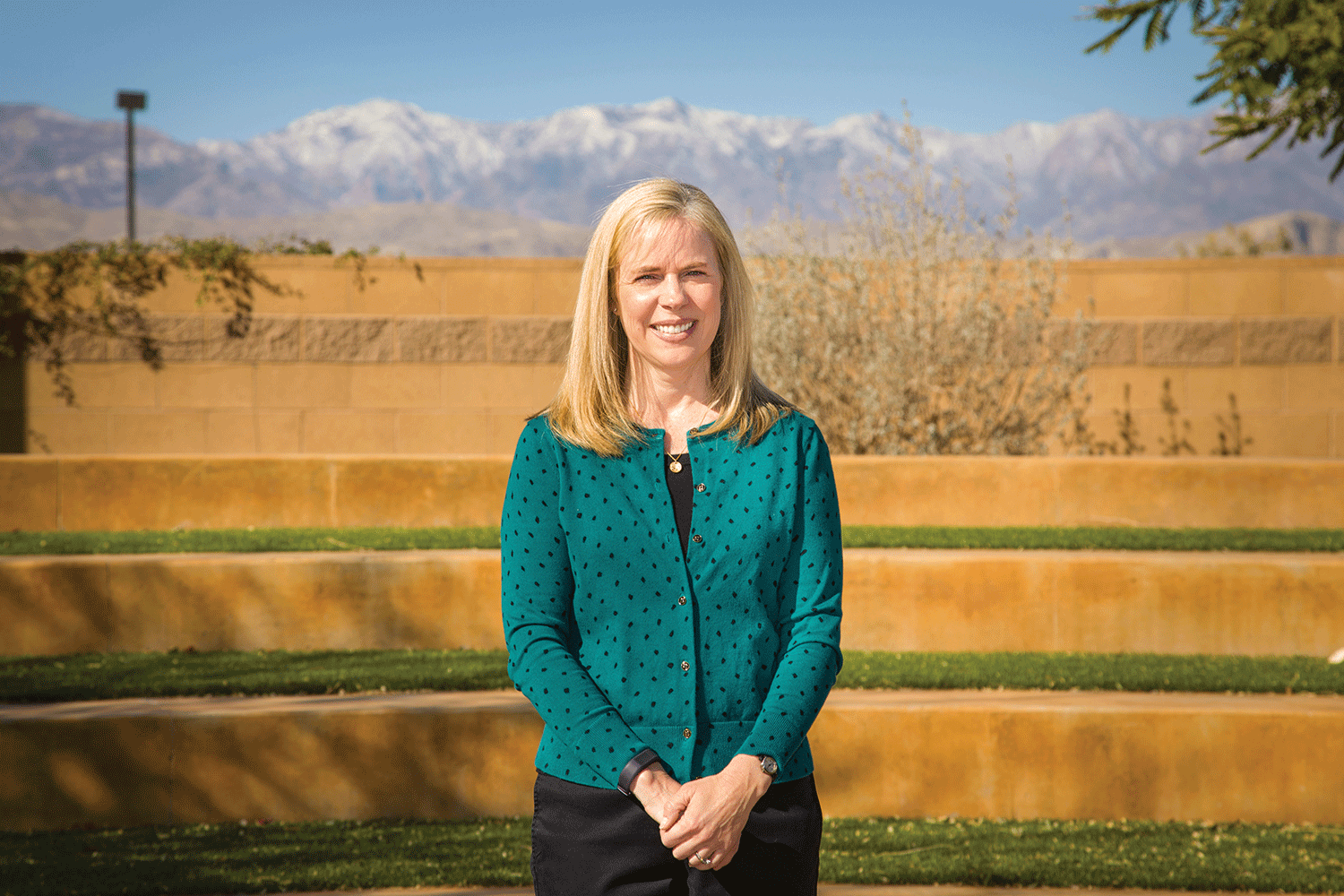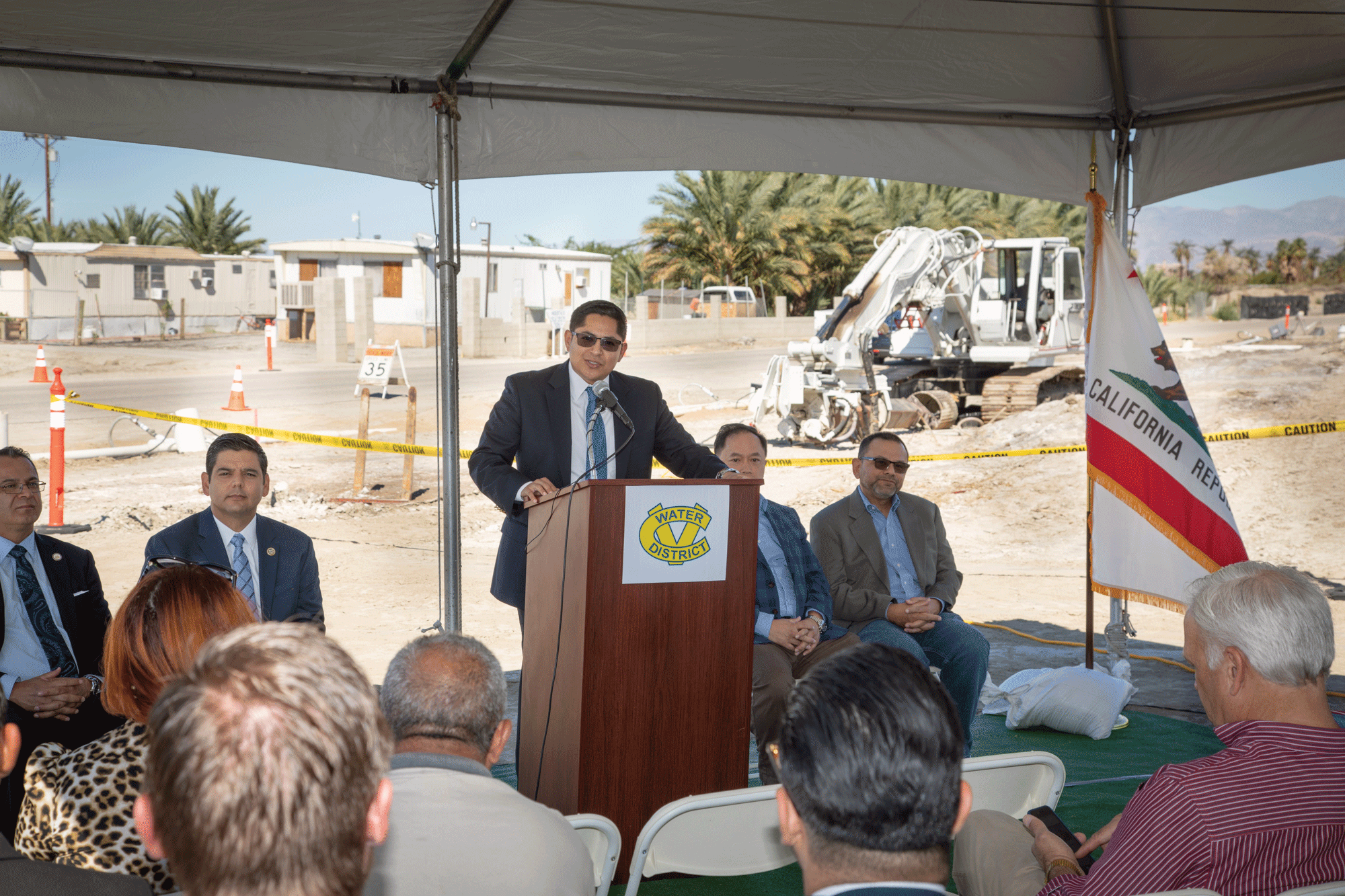Cástulo Estrada grew up in the eastern end of the Coachella Valley – an area that had little if any water and wastewater infrastructure.
Today, as a member of the Coachella Valley Water District board of directors, he’s proud of a special program bringing clean water infrastructure to disadvantaged communities in eastern Riverside County.
Called the Disadvantaged Community Infrastructure Task Force, the group has broken ground on its first clean water project, is completing plans for a second, and has more in the database.
“I lived in a small trailer park until the third grade, when we moved to Coachella,” remembers Estrada.
“After getting my engineering degree and serving on the board for the CVWD, it became my goal to put more emphasis on the lack of water infrastructure in the eastern part of the county. Some of those
communities have been without adequate water and wastewater for 40 to 50 years.”
Positive Response
CVWD engineer Carrie Oliphant serves as chair of the Task Force.
“The response from the communities we serve, and from the task force members, has been very positive,” she says. “People really appreciate our efforts to collaborate to find solutions, and we are seeing our work pay off as construction begins.”
That first project will extend sewer service to the St. Anthony’s andHuerta Mobile Home Parks in Mecca, near the Salton Sea. The project will benefit 136 families, enabling the community to abandon an old onsite sewage treatment system.
In addition, construction has begun on a new domestic water line along old Highway 86 through Coachella and Thermal to benefit communities along that corridor.
Oliphant lists three more projects which will provide domestic water service to mobile home parks and a school, and a fourth which will identify approximately 83 small water systems in the eastern Coachella Valley that have the potential to consolidate with CVWD. All of the 83 small water systems draw water from old wells. Some have high concentrations of arsenic and chromium 6.
Estrada envisions a comprehensive program similar to the efforts the Coachella Valley is making to switch golf courses from valuable groundwater to recycled wastewater. “We need to do something similar in the eastern section, identify all the small communities and small water systems and connect them with sewers and pipelines over the next several years,” he says.
Cooperative Effort
Cooperation is the backbone of the Task Force.
The team includes leaders and stakeholders from the CVWD, the County of Riverside, various funding agencies, non-profit housing organizations, school districts, the desert recreation district, a local tribe, and local and state government representatives.
They share a common goal of identifying opportunities to work in concert to bring water and wastewater service to communities through the use of grant funds, low interest loans, and other funding sources. The Task Force meets once a month. “CVWD provides information on where we are planning to install water or sewer infrastructure and it provides the other agencies and entities with the opportunity to participate in the project,” says Oliphant.
Once a project is approved, the affected communities enter into an agreement on usage rates and connection fees. “Sometimes we can get connection fees covered by a grant,” explains Oliphant. “We’ve been able to figure out how to make projects possible by finding different funding sources.”
Beginnings

Prior to formation of the Task Force, the CVWD participated in a Disadvantaged Communities Outreach program for the State, formulating methods and plans that have since been adopted by the Task Force. In turn, the Coachella Valley program – along with four others in the state – are being used as examples for the statewide Disadvantaged Communities program.
How much time and resources does the CVWD commit to the program? “Our engineering department takes the lead in the monthly meetings and managing the CVWD-related projects, with the support of our finance department,” Oliphant says. “We have five engineering staff members and two in finance who work part-time on these projects.”
The work is fulfilling. “People are pleased when they don’t have to worry about bottled water, and flooding and sewage overflows caused by heavy rains,” says Oliphant. “Plus, it’s becoming easier for us because we have learned how to navigate the funding applications, and meet the needs of the funding agencies.”
Adds Estrada: “One of first things I remember when I was campaigning (for the District board) in 2014 and met with the mobile home park owners and residents, was the lack of paved roads, poor air quality, and lack of water and sewer. These folks were advocating for better services.”
“We’re in a nice groove,” says Oliphant. “We can do these projects quicker and faster, and get more people connected.”